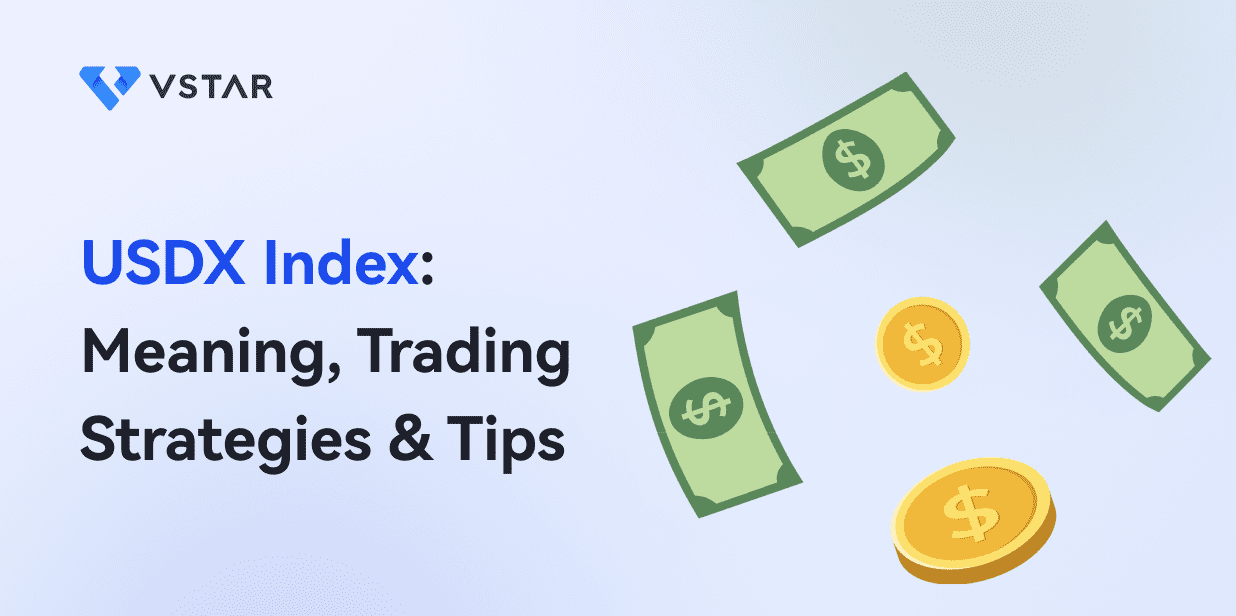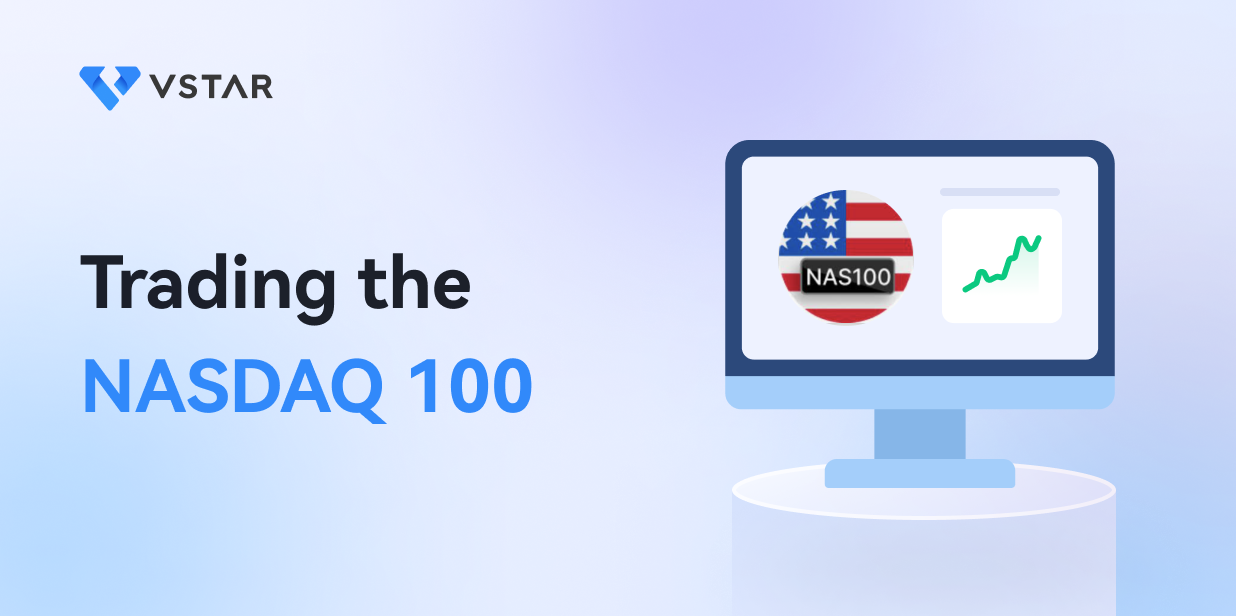Introduction
The US Dollar Index is a weighted index that tracks the performance of the US dollar against a basket of major currencies, including the euro, Japanese yen, British pound, Canadian dollar, Swedish krona, and Swiss franc. This index provides a comprehensive perspective on the US dollar's performance in international markets.
The US Dollar Index offers a clear overview of how the US dollar is faring against its counterparts. This has significant implications for various stakeholders, including investors, traders, policymakers, and businesses engaged in international trade. Monitoring the US Dollar Index helps in assessing the impact of economic events, geopolitical factors, and monetary policies on the US dollar's value.
Analyzing the US Dollar Index assists you in making informed decisions about currency trading, investments, and international business strategies. Whether you're a seasoned trader or someone looking to understand global economics, the US Dollar Index provides a reliable gauge of the US dollar's health and stability.
Composition of the US Dollar Index

Image Source: Unsplash
The US Dollar Index is a vital gauge of the USD's strength against six major currencies: the Euro, Japanese Yen, British Pound, Canadian Dollar, Swedish Krona, and Swiss Franc. Notably, the Euro's significant weighting, surpassing 50%, underscores its outsized impact on the index's movements. Computed by ICE Futures US, the index ensures accuracy by rolling over futures contracts quarterly.
This dynamic composition enables the US Dollar Index to provide a comprehensive snapshot of the USD's performance on the global economic stage. Valued by investors, traders, and economists, the US Dollar Index facilitates informed decisions and deeper insights into currency fluctuations, contributing to a better understanding of international financial markets.
A. Currently measures USD vs 6 major currencies

Image Source: Unsplash
The US Dollar Index Index, a crucial measure of the US dollar's strength, assesses its performance against six major currencies. These currencies play a pivotal role in shaping the index's dynamics, providing key insights into the US dollar's overall value in the global economic landscape. By recognizing the significance of these major currencies, you can grasp the multifaceted factors shaping the US dollar's performance.
Understanding the composition of the US Dollar Index empowers you to navigate international financial trends and make informed decisions in today's dynamic economic landscape. The Six Major Currencies are:
- Euro: As one of the world's most traded currencies, the euro's inclusion in the US Dollar Index reflects its influence on the US dollar's performance.
- Japanese Yen: The yen's role in the index highlights the US dollar's relationship with Japan, a major player in international trade and finance.
- British Pound: The pound's presence underscores the US dollar's interaction with the UK, a significant financial center.
- Canadian Dollar: Canada's economic ties with the US make the Canadian dollar a vital component of the US Dollar Index.
- Swedish Krona: Representing the Swedish economy's impact on the US dollar, the Krona completes the picture of currency interactions.
- Swiss Franc: Switzerland's financial stability and global banking significance amplify the Swiss franc's contribution to the index.
B. Euro most heavily weighted at over 50%

Image Source: Unsplash
These currencies represent major economies from different regions of the world, and their inclusion in the index provides a comprehensive snapshot of the USD's performance on an international scale. Among the components, the Euro holds the most substantial weighting, accounting for over 50% of the index's total weight.
This indicates that the Euro's significant influence on the US Dollar Index's movements, making it an essential currency to watch when assessing the USD's performance.
C. Calculated by ICE Futures US

Image Source: Unsplash
The US Dollar Index Index is calculated by the Intercontinental Exchange (ICE) Futures US. ICE is a globally recognized exchange that offers a wide range of financial and commodity products. The index's calculation involves a complex formula that takes into account the exchange rates of the USD against the six major currencies in the basket.
This formula aims to provide a balanced representation of the USD's performance against these currencies, offering insights into its relative strength or weakness.
D. Rolls over futures contracts quarterly
Another important aspect of the US Dollar Index Index is its quarterly rollover of futures contracts. Futures contracts are agreements to buy or sell a specific amount of a financial instrument at a predetermined price and date. The US Dollar Index Index futures contracts are rolled over on a quarterly basis.
This means that as one futures contract expires, a new one is created for the next quarter. Rollover ensures that the index accurately reflects the current market conditions and exchange rates, maintaining its relevance and accuracy for market participants.
Factors Impacting the US Dollar Index
The US Dollar Index is influenced by a myriad of factors that collectively shape its fluctuations. Macroeconomic indicators, like GDP growth, inflation rates, and employment data, play a pivotal role in affecting the index. Central bank policies, such as interest rate decisions and quantitative easing measures, also exert substantial influence. Geopolitical events, trade balances, and global economic stability can induce market sentiment shifts that impact the index.
Additionally, investor risk appetite, market speculation, and overall economic trends contribute to its movements.
The US Dollar Index is closely tied to global markets, with its value reflecting the collective impact of both domestic and international economic developments. Traders, investors, and policymakers closely monitor these multifaceted dynamics to decipher the potential shifts in the USD's strength against its major currency counterparts.
A. Relative strength of US economy

Image Source: Unsplash
The US Dollar Index dances to the rhythm of the US economy's heartbeat. Positive GDP growth, low unemployment rates, and vibrant manufacturing activity buoy the US dollar's standing on the index, signaling a robust economy that attracts investors and traders.
Interest rate differentials play a pivotal role in influencing capital flows. Higher US interest rates relative to other countries attract foreign capital seeking better returns, elevating the US dollar's value on the index.
B. Performance of global markets

Image Source: Unsplash
The US Dollar Index isn't an isolated entity, it thrives in the context of the global economic landscape. The stability of major economies like Europe, China, and Japan exerts significant influence, reflecting the interconnectedness of the world's financial markets.
Vibrant equity and bond markets resonate with investor confidence. Strong performance in these markets can attract capital to the US, elevating the US Dollar Index as investors seek opportunities in a stable market environment.
C. Monetary policy

Image Source: Unsplash
The Federal Reserve's stance on interest rates is a keystone in the US Dollar Index's narrative. Interest rate hikes signal a hawkish approach that can strengthen the US dollar, while rate cuts suggest a dovish approach that may weaken it.
Quantitative easing (expanding the money supply) or tightening (reducing it) are significant levers that central banks pull to influence their economies. Such policies impact the US Dollar Index as they affect the relative attractiveness of the US dollar as an investment.
Understanding these multifaceted influences empowers you to decipher the story behind the US Dollar Index's movements. Whether you're a seasoned trader, an economist, or an investor, recognizing the interconnected web of factors guiding the US Dollar Index provides insights to guide your financial decisions. As you navigate the world of global finance, remember that the US Dollar Index isn't a solitary entity, it's a reflection of the intricate dance of economic forces across the globe.
US Dollar Index Trading Strategies
Trading the US Dollar Index offers a unique avenue for investors to capitalize on the currency's fluctuations. Traders can engage through various financial instruments, such as futures contracts and exchange-traded funds (ETFs) that track the index's performance. Analyzing technical indicators, like moving averages and relative strength index (RSI), aids in identifying entry and exit points. Fundamental analysis involving macroeconomic data releases and central bank decisions is also crucial for informed trading decisions.
Due to its correlation with global economic trends, geopolitical events, and market sentiment, the US Dollar Index provides a comprehensive outlook on USD performance. Given its volatility, risk management strategies are essential. In summary, trading the US Dollar Index requires a blend of technical skills, fundamental awareness and strategic risk management to navigate the complexities of the global forex market.
A. Follow key market-moving indicators
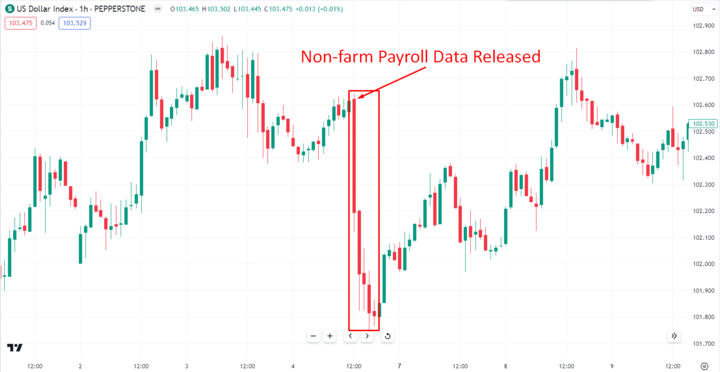
Image Source: TradingView
As you embark on the thrilling journey of trading the US Dollar Index, arming yourself with the right strategies can make all the difference. This dynamic index, reflecting the US dollar's strength against major currencies, offers lucrative opportunities for traders seeking to capitalize on global economic shifts.
Staying attuned to vital economic indicators is paramount. Non-farm payroll data, trade balances, GDP growth, and consumer price index (CPI) reports can trigger significant movements in the US Dollar Index. These indicators provide valuable insights into the health of the US economy, impacting the index's trajectory.
B. Watch for The Fed's announcements and guidance
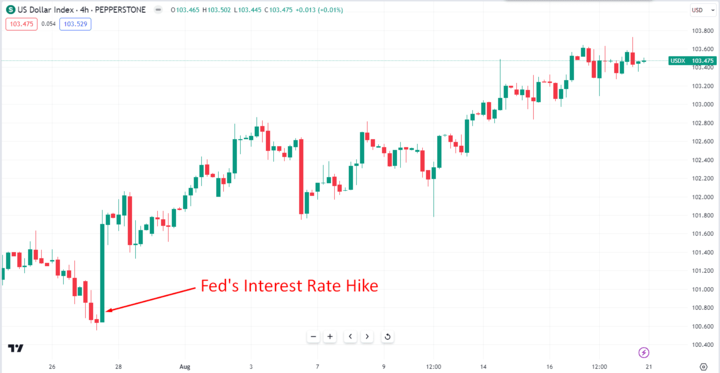
Image Source: TradingView
When trading the US Dollar Index, closely monitoring the Federal Reserve's announcements and guidance is essential. The Fed's interest rate decisions, economic outlook projections, and policy shifts can significantly impact the USD's value, directly affecting the US Dollar Index. Traders should align their strategies with the central bank's actions, as they signal the USD's potential trajectory.
Being attuned to the Fed's communication helps traders make timely and informed decisions, enhancing their ability to navigate the intricacies of the US Dollar Index and capitalize on its fluctuations.
C. Use technical analysis to time entries and exits
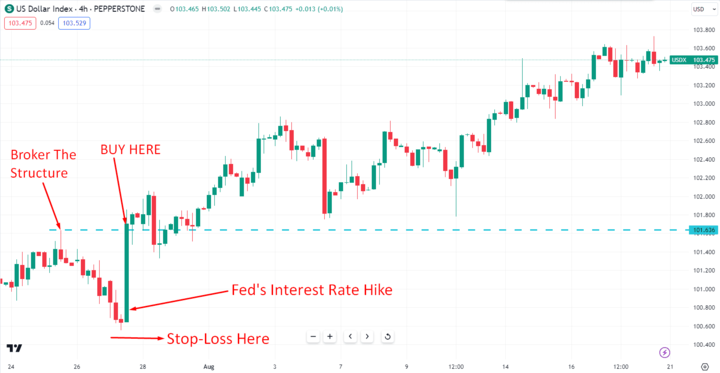
Image Source: TradingView
Employing technical analysis is vital when trading the US Dollar Index. Utilize indicators like moving averages, MACD, and RSI to identify optimal entry and exit points. Chart patterns, trendlines, and support/resistance levels offer insights into potential price movements. Given the US Dollar Index's sensitivity to global events, coupling technical signals with fundamental awareness enhances decision-making.
Traders can effectively time their entries and exits by integrating technical analysis into their strategies, allowing them to navigate the complexities of the forex market with precision.
Benefits of Tracking the US Dollar Index
Tracking the US Dollar Index offers investors, traders, and policymakers several compelling benefits. Firstly, it provides a comprehensive gauge of the USD's overall strength against a basket of major currencies, facilitating insights into its global performance. This insight is invaluable for international trade, investment decisions, and risk management strategies.
Additionally, the US Dollar Index indicates market sentiment and economic stability, aiding in forecasting trends and potential market movements. The index offers traders a unique opportunity to speculate on USD movements through various financial instruments.
Furthermore, policymakers can utilize the US Dollar Index to evaluate the effectiveness of monetary policies and assess the currency's impact on trade balances. The US Dollar Index is a vital tool that equips stakeholders with the information needed to make informed decisions in the dynamic landscape of international finance.
A. Gauge of USD strength against major currencies

Image Source: Unsplash
Tracking the US Dollar Index offers a vital gauge of the USD's strength against the major currencies. It provides a quick snapshot of the currency's overall performance in the global market. This aids investors, traders, and policymakers in assessing the USD's relative value, influencing international trade decisions, investment strategies, and policy formulations.
The US Dollar Index's simplicity and effectiveness in reflecting USD's standing against key currencies make it an essential tool for understanding currency dynamics.
B. Insights into commodity prices
Believe it or not, the US Dollar Index isn't just about currencies. Its ripples extend to the realm of commodities. As the US dollar strengthens, commodities priced in dollars, such as oil and gold, often experience downward pressure. Conversely, a weaker dollar can lead to higher commodity prices. Tracking the US Dollar Index allows you to foresee potential shifts in commodity markets and make informed decisions, whether you're an investor or a consumer.
C. Understanding macroeconomic trends
The US Dollar Index is more than just a numerical value, it's a window into the broader macroeconomic landscape. As you monitor this index, you gain insights into global economic trends. When the US dollar strengthens, it might indicate economic optimism in the US and signal potential challenges for other economies. Conversely, a weaker US dollar could point to global economic shifts that warrant closer examination.


Conclusion
As we draw the curtain on our exploration of the US Dollar Index, you're equipped with a powerful tool that offers a panoramic view of the USD's strength in the global economic arena. This index, shaped by intricate economic forces, offers more than just numerical data - it provides insights that can guide your financial decisions.
The US Dollar Index isn't just a number, it's a summary view of the US dollar's strength against major currencies. By tracking its movements, you gain a pulse on the USD's competitiveness on the world stage. Whether you're an investor, a trader, or simply someone curious about the intricate dance of currencies, the US Dollar Index provides a window into economic interactions.







